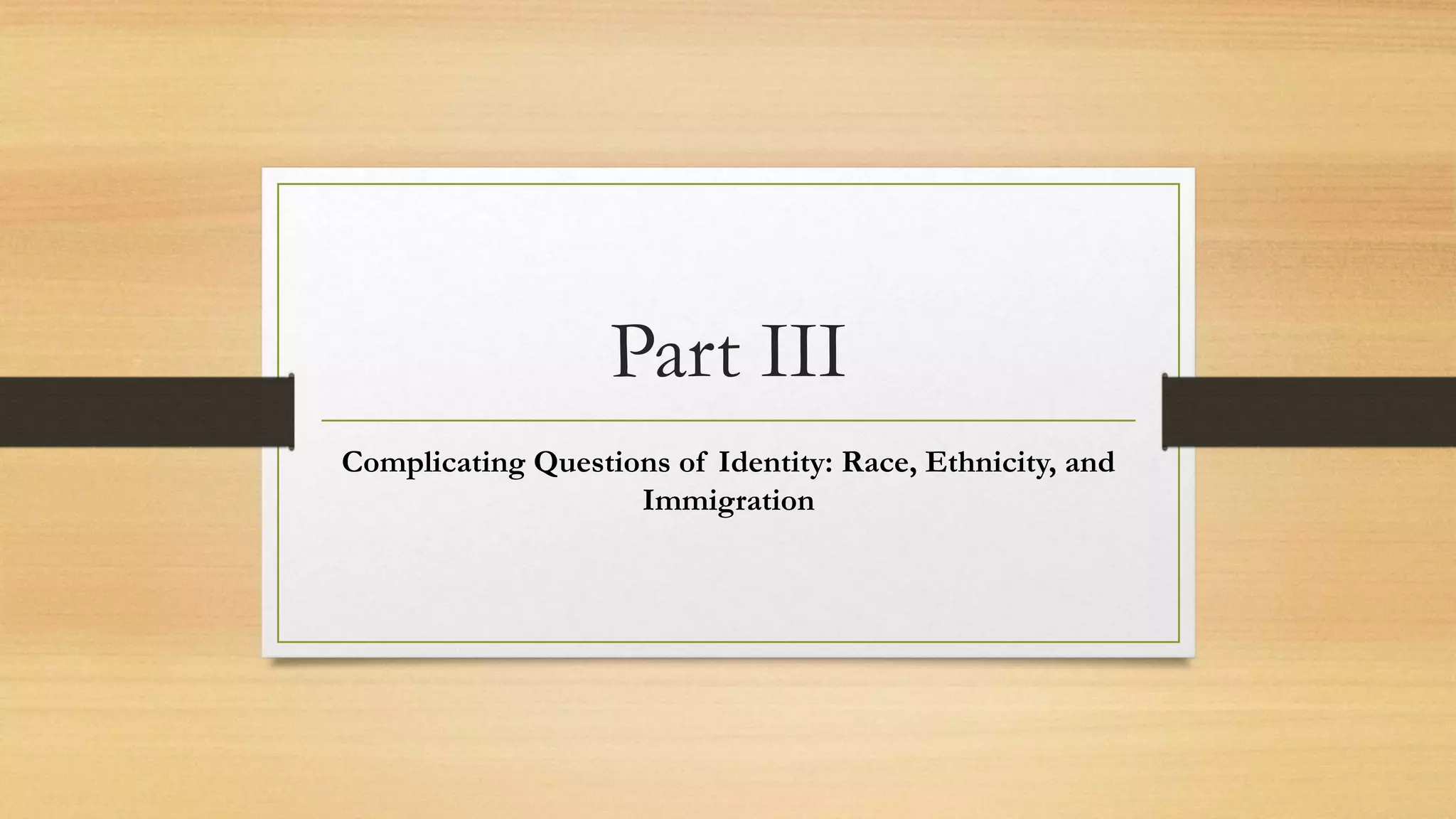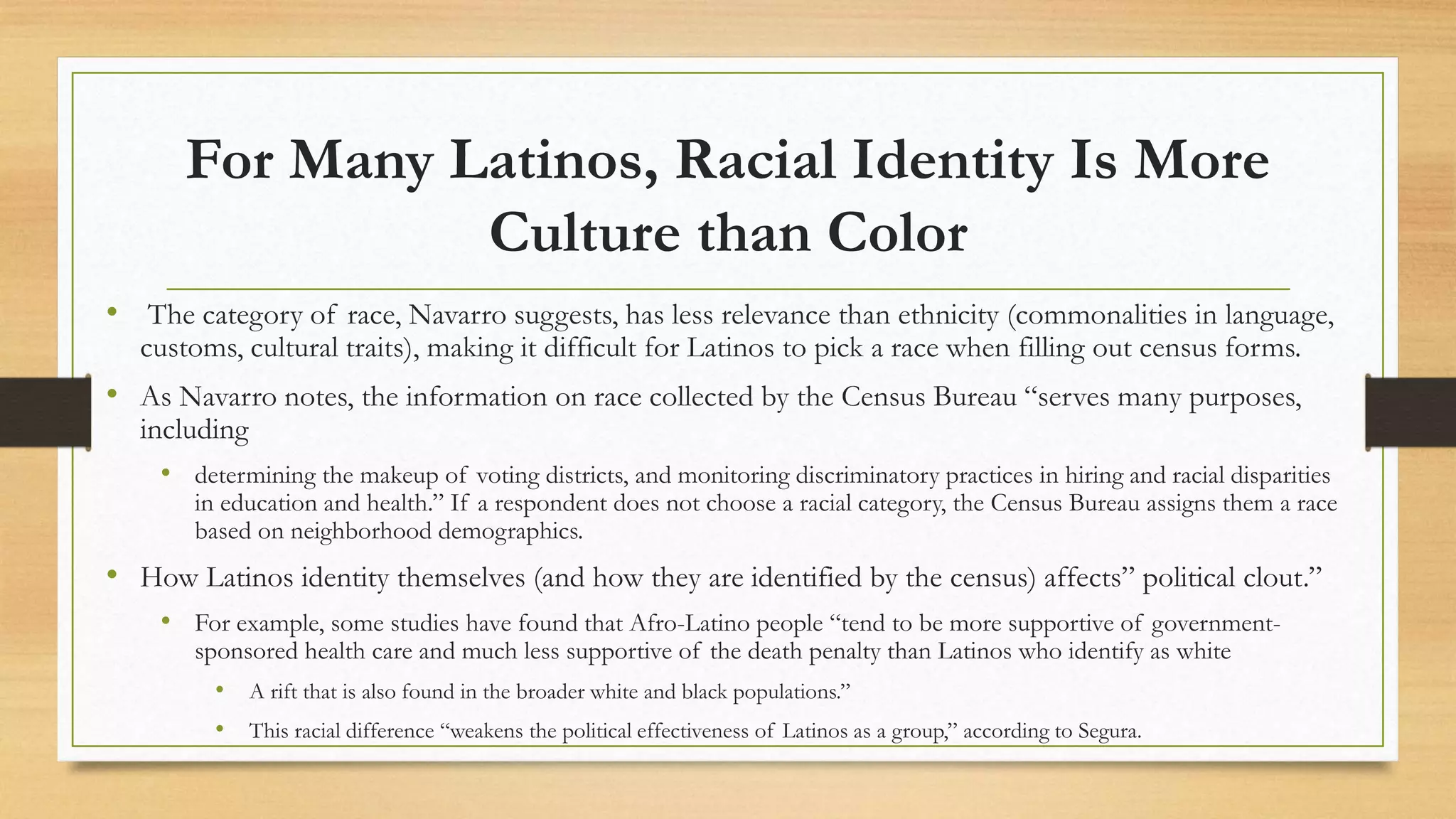The documents discuss how concepts of race and ethnicity have shaped immigration and identity in the US:
1) Four major periods of immigration coincided with economic transformations, from European settlement to today's globalized knowledge economy.
2) Early immigration laws established national origins quotas that favored Europeans and excluded Asians, while more recent reforms have increased Asian immigration quotas.
3) Racial categories on the census impact political representation, but many Latinos see ethnicity as more important than assigned race.
4) Tensions exist between native-born and foreign-born groups within and between races due to competition for resources and belonging in a system originally based on white supremacy.
5) The model minority myth distort













![How Does It Feel to Be a Problem?
• In Hassan’s case, the court decided that Arabs were not “white persons,” and
on that basis, denied his naturalization case.
• In Mohriez’s case, the court changed its mind, citing that it was in the “vital
interest [of the United States] as a world power” to have friendlier
relationships with other countries; treating “all men as created equal” was
important to this goal.
• This shows us how ideas of race and racial classification are socially and
politically constructed](https://image.slidesharecdn.com/partiii-190920220808/75/Part-iii-14-2048.jpg)

